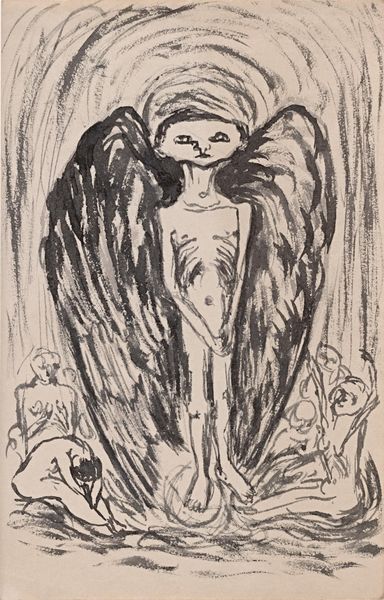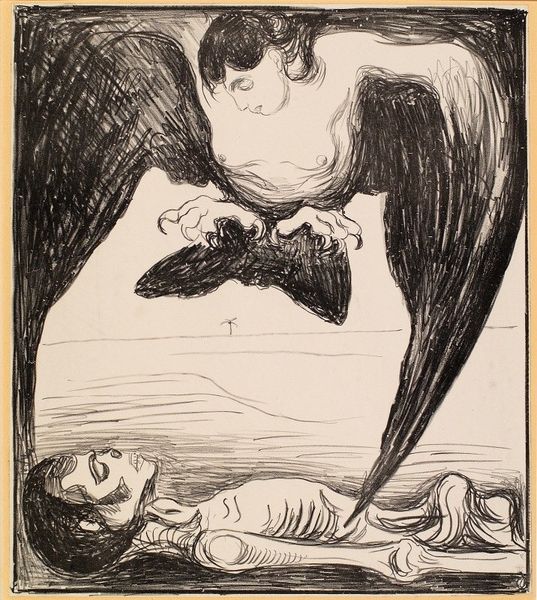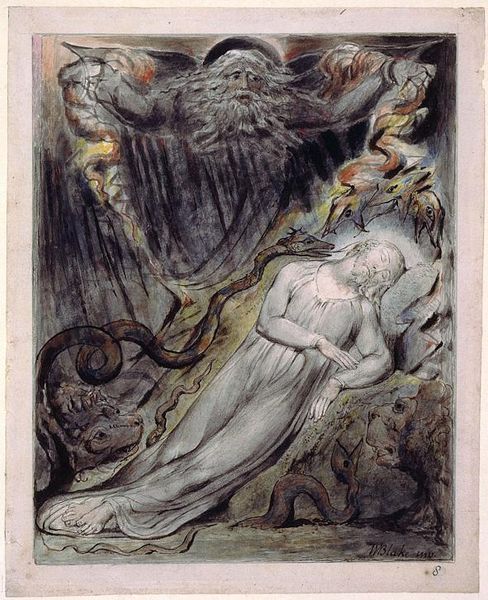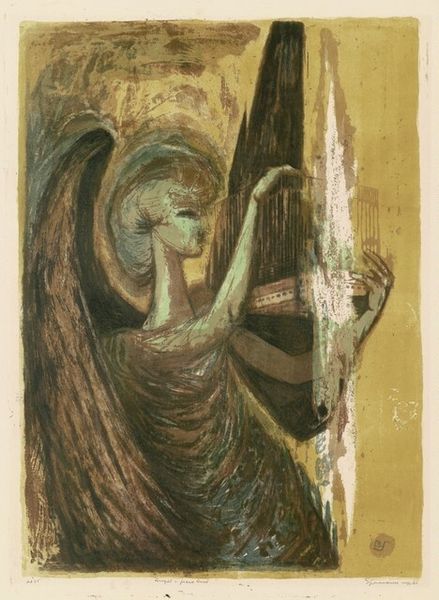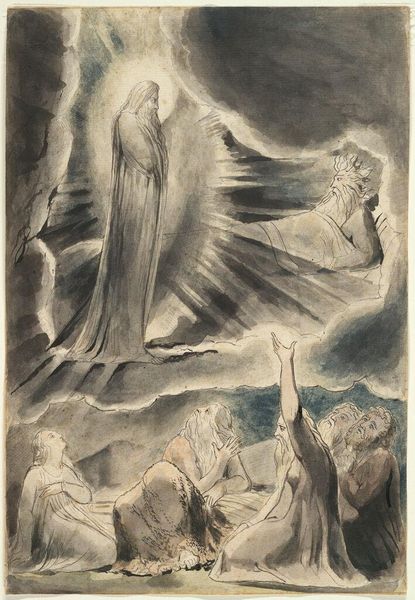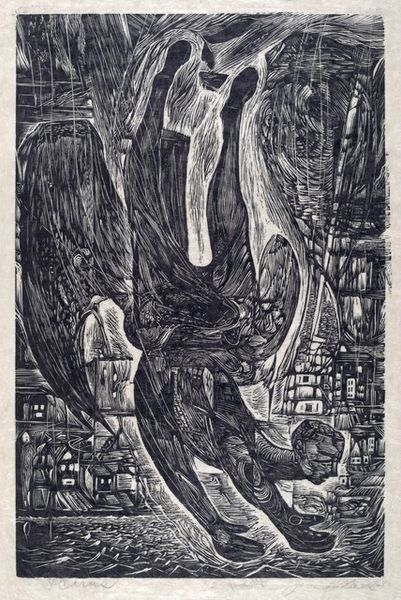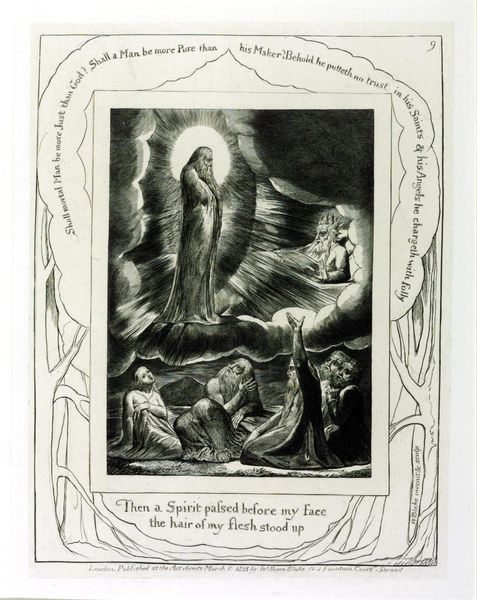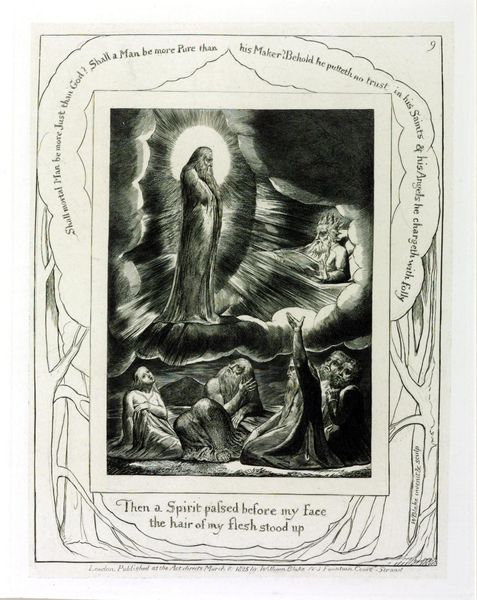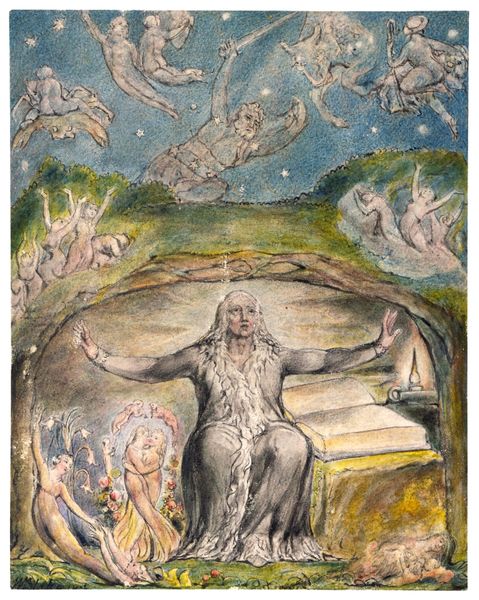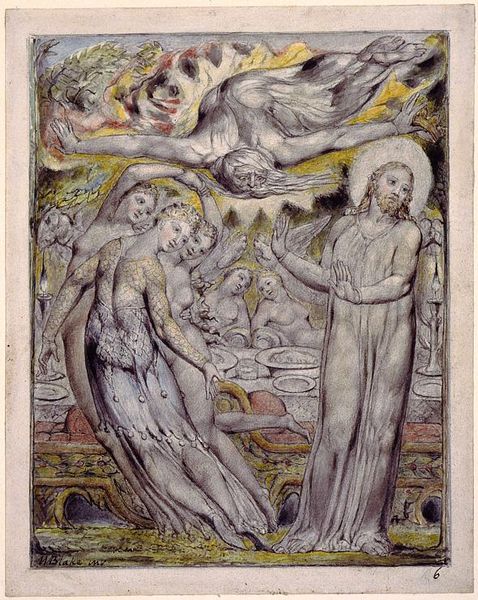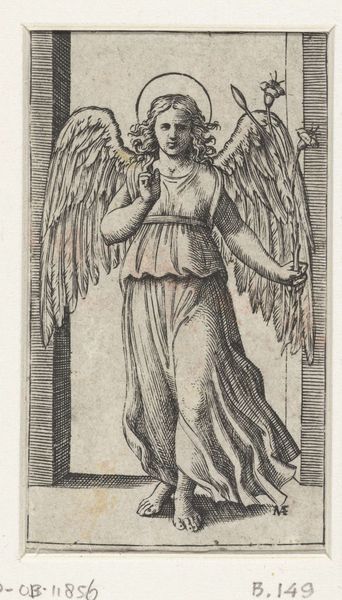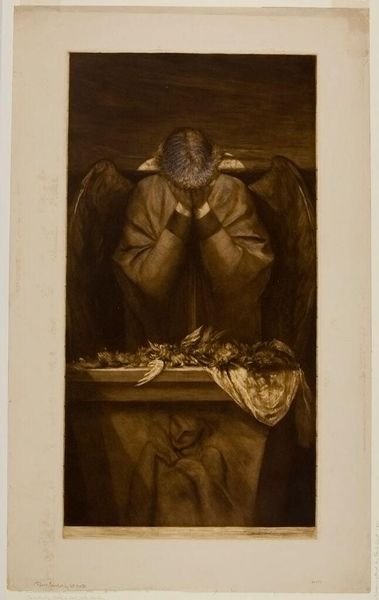
Copyright: National Gallery of Art: CC0 1.0
Editor: This is Benton Spruance’s "Fallen Angel: Vanity of Disagreement", a lithograph from 1949. The figure’s hunched posture and strained expression make me wonder about the societal pressures being represented. What’s your take on this piece? Curator: The title "Vanity of Disagreement" certainly hints at societal anxieties. I think it's important to consider the post-war context, with emerging ideological clashes and heightened political tensions. Spruance's work frequently engaged with social commentary; how might the fallen angel function as a symbol in this climate? Editor: Perhaps the fallen angel represents the loss of innocence or idealism following the war. The rigid lines of the wings contrast with the softness of the figure, creating a sense of internal conflict. Do you think this portrayal challenges or reinforces existing power structures? Curator: That’s a keen observation! It disrupts the conventional glorification of angels, and could be seen as a critique of institutions or belief systems that failed to prevent conflict. But do you see a path for the angel toward future societal integration, or only critique? Editor: That’s a good point, I am unsure. I do now see that Spruance invites us to critically examine the narratives surrounding authority and power during a turbulent period in history. Curator: Exactly. Thinking about this artwork in that moment gives me pause to reflect on current social disagreements in how our public life operates. Editor: I hadn’t considered that before. Now, thinking about the time in which this print was made I wonder if our contemporary social climate is so very different. Curator: That’s why I find the socio-historical angle is useful for interpreting and understanding the artwork. I have learnt something new today; many thanks!
Comments
No comments
Be the first to comment and join the conversation on the ultimate creative platform.
